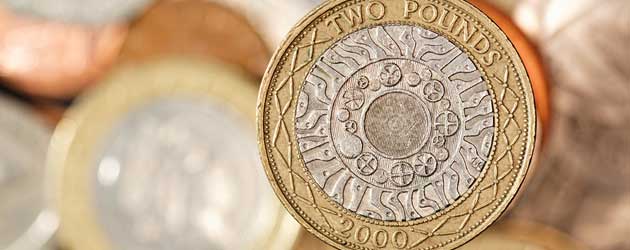
The Pound to Australian Dollar exchange rate (GBP/AUD) rallied by around half a cent earlier this morning as the Reserve Bank of Australia Minutes report showed that policy-makers remain mildly cautious regarding the domestic economy. Sterling hit a daily high of 1.5618 before consolidating at around 1.5570.
The RBA noted that economic “growth is expected to be somewhat below trend for a while” and warned that “credit growth remains subdued”. Although the latest release did not really add anything new to the equation, in terms of predicting potential interest rate reductions in the future, it did highlight the decidedly dovish outlook held by the Australian Central Bank and this negatively impacted the ‘Aussie’.
Over the past seven weeks the ‘Australian Dollar has declined by over 10 cents against the Pound with GBP/AUD rising from around 1.4500 to over 1.5500. The Antipodean currency’s downward trajectory has been influenced by dovish monetary policy from the RBA, slowing output from China and falling commodity prices.
A fortnight ago the Reserve Bank of Australia cut its benchmark interest rate to a new record low of 2.75% “to encourage sustainable growth in the economy”. With the nation’s once-in-a-century mining boom set to peak later in the year the Central Bank acted early in an attempt to ease credit conditions and prevent Australia from suffering a hard landing.
The large majority of Australia’s mining produce is exported to China to help fuel the red dragon’s rapid economic growth – China has expanded at an annual rate of over 8% in three of the last four years. However, during the last 12 months the Chinese dragon has begun to cool down and this has had repercussions for the Australian economy.
The effect of subdued growth in China has also been felt in the commodities market. Gold, silver, oil and other commodities have fallen in value so far this year due to concerns regarding the health of the global economy. Commodity prices have slid even further over the past few weeks as speculation that the Federal Reserve is on the verge of reducing the pace of its asset purchasing programme has driven the US Dollar higher. When the US currency is strong demand often drops for commodities that are Dollar-denominated because they become more expensive to foreign investors.
The combination of all three phenomena – lower interest rates, meaning lower yield; soft Chinese growth, meaning less export growth; and falling commodity prices, meaning less export profit – has left the Australian Dollar on a slippery slope. Last week the Antipodean currency sunk to a 5.5-month low against the Pound and another poor week for the ‘Aussie’ could send GBP/AUD to levels not seen since last October.
The most important thing to look out for will be Fed Chairman Ben Bernanke’s speech on Wednesday, which should shed some light on the US Central Bank’s quantitative easing scheme. If a stimulus slowdown is explicitly denied then the high-risk Australian Dollar could have a bit of a renaissance as risk appetite swells. However, a slightly more hawkish statement, hinting at a tapering of QE3, could deflate risk sentiment and subsequently send GBP/AUD to a new 7-month high in the region of 1.5670.

Comments are closed.